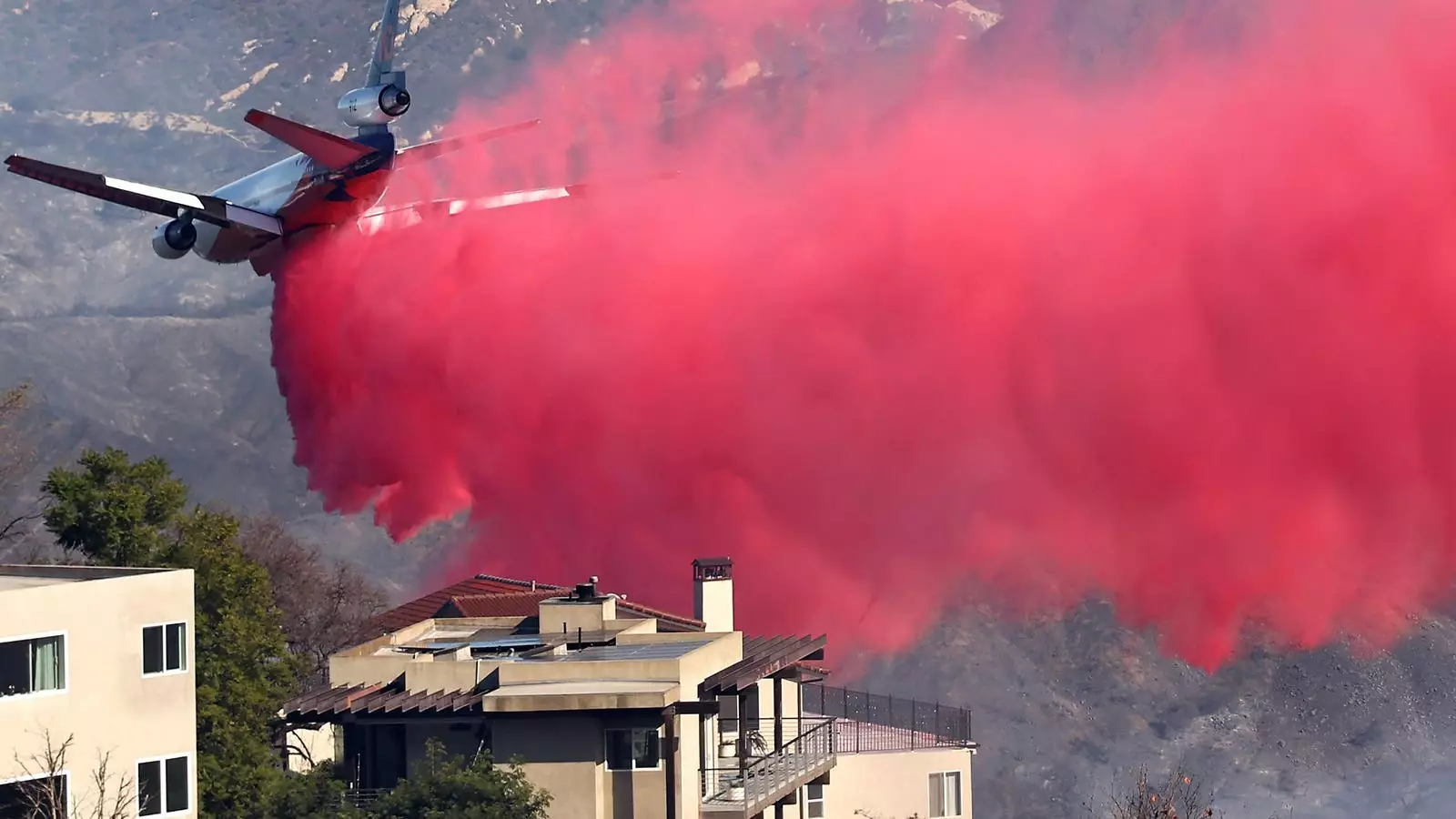The recent devastation caused by wildfires in the Los Angeles area has raised significant concerns about food safety for residents, not just those living close to the flames. The fires, which broke out amid fierce Santa Ana winds and dry vegetation, have burned tens of thousands of acres and left lasting damage that extends well beyond the immediate vicinity. The USDA has issued stark warnings regarding the safety of food in homes potentially affected by these wildfires, which emphasizes the connection between environmental disasters and public health.
Wildfires release an assortment of pollutants that can compromise air quality and contaminate food supplies. As flames consume vegetation, they don’t just release smoke; they also burn synthetic materials found in urban environments, including plastics, rubber, and treated materials like asphalt. The resultant smoke contains a higher toxicity than regular air pollution, with fine particulate matter reaching alarming levels—sometimes exceeding 100 micrograms per cubic meter. This toxic cocktail presents serious concerns for households that, although miles away from the fiery chaos, may still be exposed to harmful contaminants.
According to Mark Davidson, an expert in air filtration, the dangers of wildfire smoke extend far beyond the geographical limits of a fire. This smoke is known to carry ultrafine PM2.5 particles, which can infiltrate living spaces and contaminate food packaging. Once these harmful particles interact with food items, they present a real and significant health risk that cannot typically be remedied through cleaning or washing.
As the smoke spreads, it can settle on food and food surfaces, presenting challenges to public health officials. The Los Angeles Department of Public Health has advised swift action to discard any food covered in ash or exposed to smoke. In addition, food stored in plastic containers or wrapped in non-waterproof materials is particularly vulnerable to contamination, warranting careful disposal to avoid foodborne illnesses. The presence of more than 90% PM2.5 particles in wildfire smoke suggests that even tightly sealed foodstuffs can be compromised without proper storage measures.
Research has shown that the wildfire smoke can serve as a vehicle for not only particulate matter but also bacteria and fungi. Experiments have demonstrated that smoke, even from significant distances, can foster microbial growth, which raises critical questions about how safely our food supply is maintained during such crises. In this context, food safety becomes intertwined with broader environmental considerations.
Compromised Food Systems and Emergency Protocols
The implications of such widespread contamination highlight deficiencies in disaster preparedness. As wildfires ravage communities and threaten food supplies, protocols that prioritize food safety are necessary. Experts recommend disposing of any food products exposed to smoke or ash, including fresh produce and raw foods, to mitigate risks associated with post-wildfire contamination. Items stored in non-airtight containers must also be discarded, while shelves in pantries need thorough assessments to ensure safety.
Moreover, power outages that accompany wildfires pose additional hazards. Many people assume they can salvage spoiled perishable items by cleaning out their fridges. However, experts argue that extended exposure to high temperatures can result in lingering contamination, making it safer to consider complete replacements of certain appliances. The grim prospect of food waste underscores the fragility of our food systems in climate-affected regions.
It’s Not Just Flames; It’s the Aftermath
The emotional and physical toll of the Los Angeles wildfires is immense, with hundreds of thousands of individuals affected. With nearly 200,000 people displaced and the number of fatalities projected to rise, the situation serves as a dire reminder of how climate-related disasters disrupt not only lives but also food supply chains. As the fires continue, the long-term mental and physical health impacts on affected communities must be addressed.
The reality of these wildfires exemplifies the urgent need for better disaster preparedness and robust contingency plans for food safety. Addressing this nexus between environmental disasters and food security requires immediate action, alongside proactive measures to develop long-standing strategies aimed at safeguarding communities from the profound impacts of future wildfires.
The Los Angeles wildfires have highlighted a critical interplay between natural disasters and food safety. As we learn from these events, it is paramount to adopt comprehensive strategies for disaster preparedness that prioritize public health. Addressing risks associated with environmental calamities and establishing clear protocols for safeguarding food can ultimately help protect communities from devastating consequences. By prioritizing long-term solutions, we can better navigate the complexities posed by climate change and work toward ensuring a safer future for our food systems.


Leave a Reply